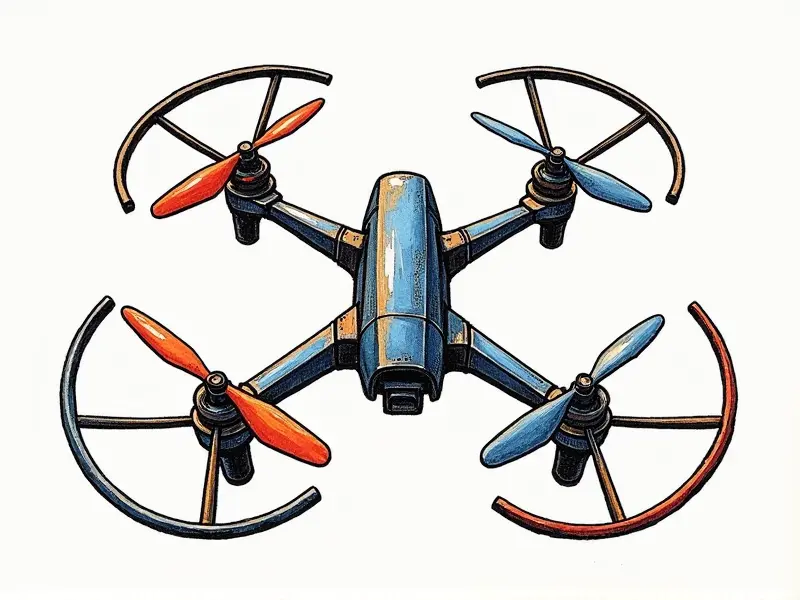How to set up an iFlight camera?

Beginner's Guide to iFlight Camera
Welcome to the world of FPV (First-Person View) drones and quadcopters! Setting up your iFlight camera is a crucial step in enhancing your drone’s performance, especially if you're looking for high-quality video streaming or real-time footage. This guide will walk you through every aspect of setting up an iFlight camera effectively.
Mastering iFlight Camera Installation
Before diving into the installation process, it's essential to understand the components and tools needed:
- iFlight FPV camera module: This is the heart of your drone’s video transmission system.
- VTX (Video Transmitter): Connects the camera to the ground station receiver for real-time video streaming.
- Battery and power connections: Ensure a stable power supply for both the camera and VTX.
- Cable harness: For connecting all components securely.
Proper installation ensures that your drone operates smoothly without any lag or interference issues. Follow these steps to install your iFlight camera correctly:
Step-by-Step iFlight Camera Setup
1. Mounting the Camera:
- Select a mounting point on your drone frame that offers clear visibility and minimal obstruction.
- Securely attach the camera using appropriate mounts or brackets to ensure stability during flight.
2. Connecting Power Supply:
- Connect the power cable from the battery directly to the iFlight camera.
- Ensure that all connections are tight and secure to prevent any disconnections mid-flight.
3. Wiring the VTX:
- Attach the video transmitter to the camera using a coaxial cable or antenna.
- Connect the power supply for the VTX, ensuring it is compatible with your battery voltage.
4. Calibration and Testing:
- Power on both the camera and VTX to check if they are functioning correctly.
- Adjust any settings such as transmission power or channel selection based on your needs.
- Test the video feed using a ground station receiver to ensure clarity and stability of the signal.
Optimize Your iFlight Camera Fast
To get the most out of your iFlight camera, consider optimizing its performance:
- Adjust Video Quality Settings: Modify resolution, frame rate, and bitrate for optimal video quality.
- Tune Transmission Power: Balance between range and battery consumption to get the best signal strength.
- Select Appropriate Channels: Choose channels that minimize interference from other devices or drones in your area.
Rapid Setup for iFlight Camera Use
If you're short on time but need a functional setup quickly, follow these streamlined steps:
- Quick Mounting: Attach the camera to a pre-installed mounting point.
- Direct Power Connection: Connect directly to your drone’s main battery for immediate power.
- Plug-and-Play VTX: Use a compatible VTX with automatic configuration features for quick setup.
Simplified iFlight Camera Installation Guide
This guide offers a straightforward approach to setting up your iFlight camera:
- Mounting: Secure the camera in place using standard mounting hardware.
- Cable Management: Use cable ties or clips to manage and secure all cables neatly.
- Voltage Check: Verify that your battery voltage matches the required input for both camera and VTX.
Simple Setup for iFlight FPV Camera
A simple setup ensures ease of use without compromising functionality. Here’s how to do it:
- Select a Mount: Choose a mount that fits your drone frame and provides clear visibility.
- Power Connection: Use the provided power cable or connector for direct battery connection.
- Video Transmitter: Connect to VTX using standard coaxial cables, ensuring proper polarity.
iFlight Camera Setup in Minutes
Saving time is crucial when you’re eager to fly. Here’s a quick guide for a fast setup process:
- Mounting: Use pre-installed or easily attachable mounts.
- Cable Setup: Connect power and video cables directly without additional tools.
- Quick Test: Power on and test the camera’s functionality right away.
Quick Start: iFlight Camera Configuration
This section covers essential configuration steps for optimal performance:
- Channel Selection: Choose a channel that is free from interference, enhancing video clarity.
- Transmitter Power: Adjust power settings to balance range and battery life.
- Video Quality Settings: Configure resolution, frame rate, and bitrate for high-quality streaming.
Instant Setup for iFlight Camera
An instant setup is ideal when you need your drone ready in a hurry. Follow these steps:
- Mounting: Use pre-installed mounts or quick-release systems.
- Direct Power Connection: Connect directly to the battery for immediate power supply.
- Plug-and-Play VTX: Use a compatible VTX that requires minimal configuration.
Optimize Your Drone with iFlight Cam
To fully leverage your iFlight camera, consider these optimization tips:
- Signal Strengthening: Utilize external antennas or amplifiers for better range and clarity.
- Battery Management: Use high-capacity batteries to ensure consistent power during long flights.
- Software Updates: Keep firmware up-to-date for the latest features and bug fixes.
Conclusion
Setting up your iFlight camera is a vital step in enhancing the FPV experience of your drone. By following these detailed guides, you can ensure that your setup process is smooth and efficient, leading to high-quality video transmission and an enjoyable flying experience.
Remember to test thoroughly after installation and regularly maintain your equipment for optimal performance.

